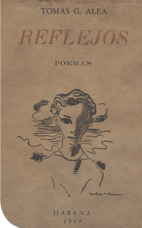4.1.3.5 Sporadic poets of the generation of 50: Tomás Gutierrez Alea (1928 – 1996)

Although Tomás Gutiérrez Alea has transcended Cuban culture for his work as a filmmaker, he is also the owner of a poetic work that aroused the interest of the Parnassus of his time, which he did not continue but did incorporate elements of this poetic view of the world into his future as a screenwriter and director in Italy and later in the Cuban cinematographic context of the revolutionary period, one of the most prominent figures of the new Latin American cinema and founder of the Cuban Institute of Art and Cinematographic Industry (ICAIC), located at 23 and 12, Vedado, Havana City.
The author of a vast filmography and also a documentary filmmaker, he co-directed the feature film “Fresa y Chocolate” with Juan Carlos Tabío in the early 1990s, completing it in 1993. This is the only Cuban film ever nominated for an Oscar. This film contains a critique of Cuban society and institutions, but from a revolutionary perspective. Marxism and homosexuality are interwoven in a plot of high poetic conception, which at times delves into previously undisclosed areas of Cuban culture, including the work and inspiration of José Lezama Lima.
Gutierrez Alea is the author of the poetry collection “Reflejos,” published in 1949, which is part of the ups and downs of the emergence of a new generation that, without denying Origenist poetics, brought its own poetic discourse, imbued with the neo-romanticism that would flourish substantially during these years. Although this piece lacks a grand aesthetic scope, it contains some elements that would later take shape, if not into a poetic form, then into a defined aesthetic, associated with Latin American circumstances.
Two years later, he completed his law degree at the University of Havana and traveled to Italy, studying film at the Centro Sperimentale di Cinemoatographia in Rome, a specialty he completed in 1953. Since then, he has been primarily involved in this world, but with aesthetic results that reveal an interesting audiovisual poetics, closely linked to a conception of the script or storyboard that is also rooted in poetry.
The initial neo-romantic impulse of Tomás Gutierrez Alea would lead to a poetics of social commitment that had its privileged space of expression in cinematography but without abandoning the printed word, which will be seen that he continued doing after the triumph of the Revolution, appearing in these artistic spheres but also as a defender of a different relationship between culture and revolution, one could say that conceiving the revolutionary phenomenon within culture and not vice versa.








